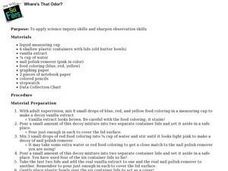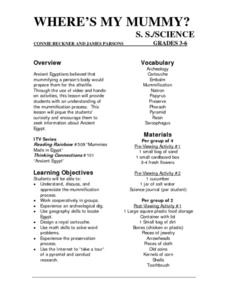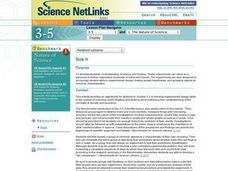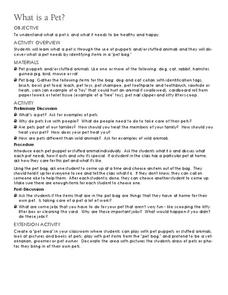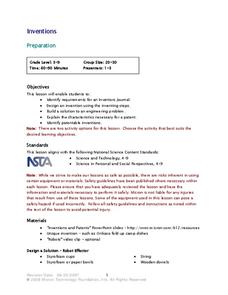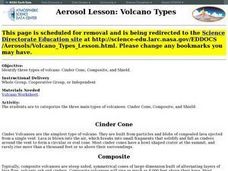Curated OER
Role of Masks in African Cultures
Students explore ancient tradition and craft of mask making, examine role or function of masks in African culture, create instruments, and participate in class projects.
Starry Night Education
Comets and Meteors
Comets are also known as dirty snowballs or icy mud balls. With your super scientists, create a model comet nucleus to discover how they are made and take part in a scientific discussion to learn how it behaves.
Penn Museum
Maya Ball
Sure the ancient Mayan civilization had an advanced calendar and mathematical system, but did you know that they also played a great team sport like basketball? Invite your learners to discover the great ballcourt at Chichen Itza and...
Minnesota Literacy Council
Grapes of Wrath and Pronouns
Many regard John Steinbeck's The Grapes of Wrath as the great American novel. The lesson plan combines a variety of strategies, including partner work, independent practice, creative writing, grammar instruction, and small group...
Curated OER
Einstein's BIg Idea
Students discuss what the m in E=mc2 represent. They relate that mass in a chemical reaction is always conserved. Students convey that atoms rearrange themselves in chemical reactions to form different molecules and compounds.
Curated OER
Dancing Paper: Static Charge, Science
Students use glass, plastic, paper and various other materials to investigate the properties of static charge and develop scientific inquiry skills.
Curated OER
Where's That Odor?
Students use various substances to experiment with odors and their potency. They sharpen their observational skills.
Curated OER
So Many Cats!
First graders listen to the book, So Many Cats, and discuss the number of cats in the story. They demonstrate simple addition problems using cat counters and a work mat in the shape of a house.
Curated OER
Vertical and Horizontal Lines
First graders view works from Mondrian such as "Composition with Red, Yellow and Blue" receiving explantion of the primary and secondary colors and the color wheel and vertical and horizontal lines. They glue black strips to the...
Curated OER
Keeping Warm
There are five separate lessons about heat in this collection of slides. Young scientists learn how to use a thermometer to measure temperature, and they experiment with insulators. You can use one of these lessons each day for a full...
Curated OER
Defining Drought
High schoolers examine the hydrologic impacts of drought. Humans can change the course of the water cycle, to some extent, to meet their needs, but can they do so without imposing risks on the plants and animals?
Curated OER
Where's My Mummy: Preservation Techniques
To observe preservation techniques firsthand, learners dry a flower in sand and compare cucumber slices soaked in salt water for a week with slices left out to dry in the open air. Video resources (not attached) include one about mummies...
Curated OER
Structure of Matter
Fifth graders, in groups, distinguish between mixtures, solutions and suspensions.
Curated OER
Mouse Roulette
Young scholars explore the food chain. To gain an understanding about the food web, students participate in a simulation where owlets are being fed by adult owls. Afterward, young scholars examine the results of the role play to...
Curated OER
Who? What? Why? - Using Interrogative Pronouns
Interrogative pronouns are an important part of learning the interrogative sentence form. Middle schoolers learn about using interrogative pronouns in sentence writing, and use what they read to answer the nineteen questions on the...
Curated OER
Motion Lotion
Students view a video to explain the meaning of friction. In a hands-on experiment using gelatin, students test the effects of lubrication on friction. They complete a worksheet imbedded in the lesson to describe their observations.
Curated OER
Sink It
Introduce your class to the concept of sinking and floating. In groups, they classify objects after making predictions about which materials will sink or float. They record their results and create graphs and charts to share with the class.
Curated OER
What is a Pet?
Students define what a pet is and what it needs to be healthy and happy. They explore pets through the use of of puppets and/or stuffed animals and discover what a pet needs by identifying items in a "pet bag."
Curated OER
Inventions
Students study invention steps and design their own invention. In this invention lesson, students discuss inventions and the process of inventing. Studnets write in an inventor's journal and study various types of inventions....
Curated OER
How Much Is A Million
Help young learners visualize the concept of "a million." To convey concepts of numeration and literacy, they will listen to the book How Much is a Million? by David Schwartz. They should be able to make self-to-text connections....
Curated OER
Number Line Snacks: Compare Numbers to 10
Kindergarteners put Cheerios or cheddar fish on two number lines (up to 10 each) and identify which number the snack pieces indicate. They compare numbers after eating a few of each snack, and get an introduction to addition and...
Curated OER
Aerosol Lesson: Volcano Types
Students identify three types of volcano: cinder cone, composite, and shield.






